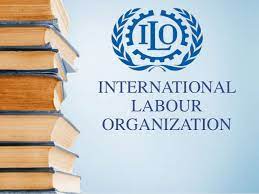The International Labour Organization (ILO) has reported that annual rate of inflation worldwide, as measured by the consumer price index (CPI), rose to 9.2 percent in March 2022, up from 7.5 percent in the preceding month.
The rates were 6.8 percent in January 2022 and 6.4 percent in December 2021.
The global labour organization noted that the inflation rate in March 2022 was more than twice the rate of 3.7 per cent recorded in March 2021.
It further reported that the jump in the CPI by 5.5 percentage points between March 2021 and March 2022 constituted the highest increase in any 12‑month period since the beginning of the series in January 2019.
Also, the ILO reported that the overall rise in inflation reflected the effects of the COVID-19-related lockdowns in 2020 and 2021, noting that more recently, though, it has been driven by a surge in energy and food prices, especially since the start of the Russia-Ukraine on 24 February 2022.
The organization stated that the war had inflicted a major shock on commodity markets, disrupting global patterns of trade, production and consumption in ways that are likely to keep prices at high levels in the coming years.
The ILO stated: “According to data on the global commodity market from March 2022, wheat and oil are currently both about 50 per cent more expensive than they were a year ago. The prices of other cereal grains are also rising.
“For importing countries, these price increases present a significant obstacle to economic growth and livelihood, potentially raising social and political tensions.
“Food prices, in particular, are now soaring. In March 2022, they were 9.1 per cent higher than in March 2021”, it added
The labour organisation pointed out that, however, it should be noted that prices, especially food prices, were rising even before the war in Ukraine started as COVID-19-related restrictions on the cross-border movement of labour and disruptions in global supply chains had pushed production costs up and reduced competition.
According to the ILO, the recent price increases triggered by the war in Ukraine have simply aggravated the existing price pressure due to the confluence of high demand and persistent supply shortages.
It further explained that it was not only the supply side that was affected by the pandemic as the sharp drop in demand for some goods and services led to a decline in the prices of certain items, such as fuel, in the CPI basket, thereby resulting to inflation slow down at the global level between March 2020 and March 2021.
The ILO stated that as the pandemic-related restrictions were gradually eased toward the end of 2021, growing demand coupled with higher energy and shipping costs led to a rapid increase in consumer prices.




